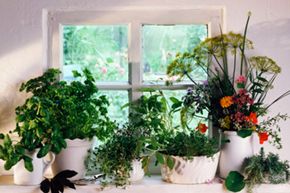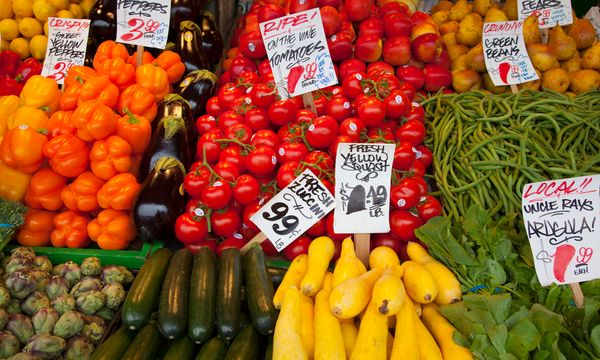Herbs are great fun to grow indoors. They're the perfect companion for the curious cook who isn't afraid to take a few chances. Start with a sunny windowsill and a few herb seeds and -- snip-snip, you have an instant gourmet meal. Well, it may not be quite that simple, but fresh herbs are still a great asset to have in the kitchen.
To get your indoor herb garden going, you can use a couple of different methods. One is to park a planter filled with quality potting soil and your favorite herb seeds in front of a window that gets lots of natural sunlight. For this to be successful, the spot you choose will have to get six hours of sunlight each day and not be so hot in the afternoons. Think southern exposure here, where the plant leaves won't burn. If you have a perfect spot, hopefully in your kitchen near where the action is, go for it. A bag of potting soil, some culinary herb seeds and some judicious watering, and you're ready to go.
Advertisement
If, like many of us, you don't have the perfect herb-friendly conditions available, you can use a hydroponic kit instead. This soilless setup uses liquid nourishment and special lights to produce perfect plants fast. Because herbs are among the most popular garden plants for this type of arrangement, it's easy to find hydroponic equipment retailers that offer products specifically for indoor herb gardens.
Whatever option you choose, the three main things herbs will need to grow lush and flavorful is good light, water and the right nourishment.
Indoor Herb Growing Tips and Tricks
To get your herb garden started without any major problems, make sure to choose healthy plants, or grow your own from seed. This means that you should inspect plants before you bring them home and discard any that show signs of insect activity. If a plant looks suspicious, pass. Other things to keep in mind are:
- Give plants plenty of room. Plant descriptions and seed packets will offer spacing recommendations, and even though potted plants don't typically grow to full size, give them generous accommodations.
- Water plants regularly and make sure the pots drain thoroughly after watering. One of the biggest plant killers is stagnant water hanging around long enough to rot plant roots.
- Turn plant pots frequently to keep plants growing evenly on all sides.
- Go light on the fertilizer. Most herbs like moderate to poor soil. Remember, more houseplants are killed with kindness than through neglect.
- Wait for plants to reach 6 to 8 inches (15.24 to 20.32 centimeters) in height before harvesting any leaves, and only take about a quarter of the plant or less at any one time. After you've snipped an herb's leaves, wait for that much or more to grow back before harvesting again. If you're a parsley or oregano fanatic, it might be a good idea to keep more than one plant going at a time.
Now that you have a thriving indoor herb garden, it's time to start growing your vegetables indoors, too. Yes, indoor tomatoes, cucumbers and lettuce! You'll be a household farmer in no time.
Advertisement



